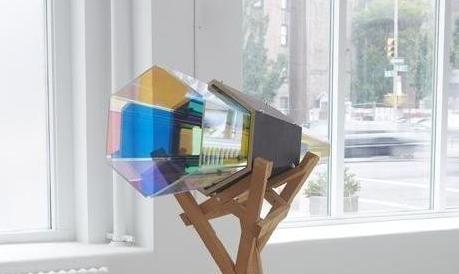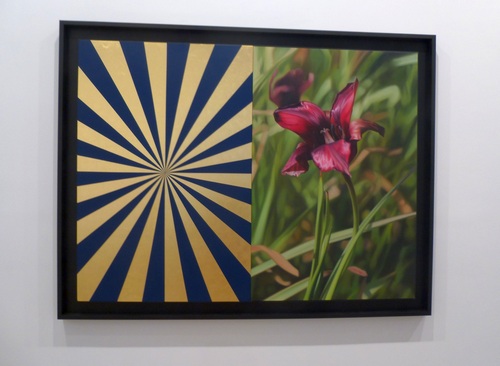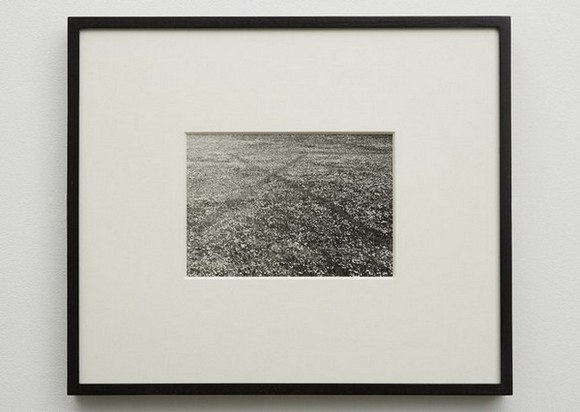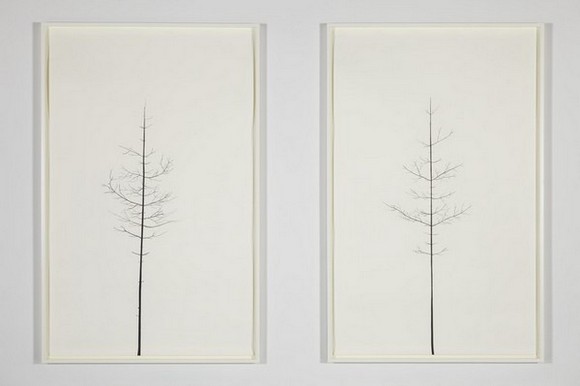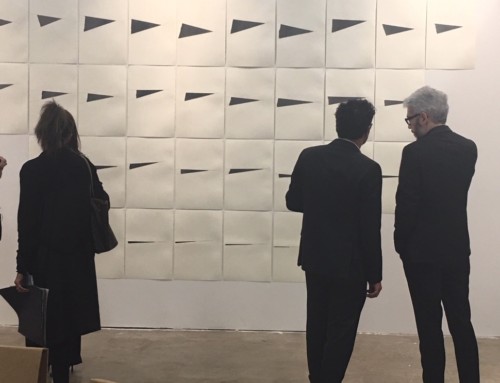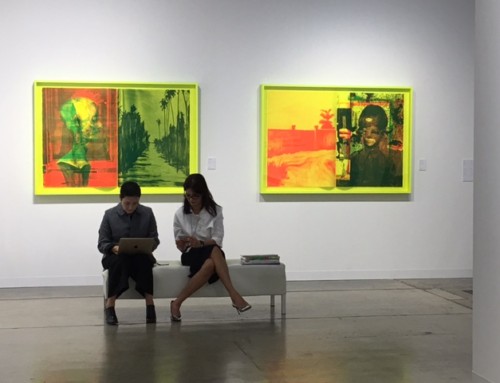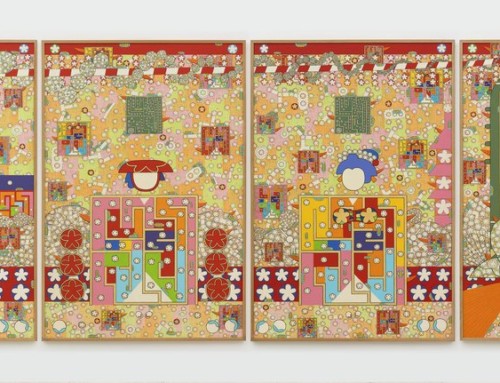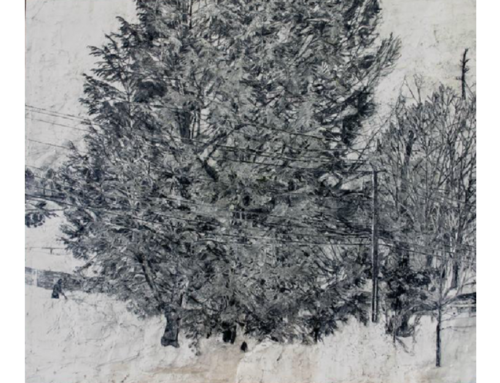How much does a gene’s environment affect the gene? How much does man’s environment changes him and his art?
As we reflect on this question, we are surprised to find an art exhibition this summer that actually addresses the issue of Nature.
On Nature is the name of the exhibition, currently on view at New York’s Sean Kelly art gallery.
It includes an unusual mixture of works from contemporary artists of different times broaching the subject of Nature from different perspectives, focusing on the concept of man within the context of Nature and the relationship between them.
One of the seminal historic works of Joseph Beuys called Capri Batterie (1985), for example, is a sculpture of a yellow light bulb, presented in such a way that it appears to be powered by a fresh lemon, thus subtly and powerfully comment on man’s use of nature as a fuel source.
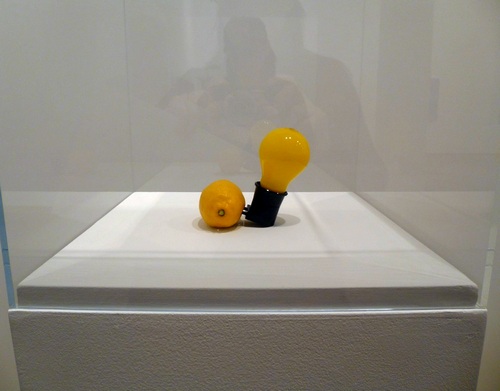
Joseph Beuys. “Capri Batterie”. 1985. Wooden box, yellow bulb with support to connect to a lemon. Box: 7 ½ x 7 ½ x 7 ½ inches (19 x 19 x19 cm), bulb with holder: 4 ½ x 2 ½ x 2 ½ inches (11.4 x 64 x 64 cm)
A different approach is the inevitable advocate of the 1960s Land Art movement, Richard Long, with his large-scale floor sculpture of Leuk Stone Circle (2000), an installation that brings to the gallery space stones from Rhode river in Switzerland, organized in circles, inviting us not only to think about Nature, by directly perceiving it, but also meditate on its archetypal symbolic significance.
A 9-minute video by the Dutch video artist and musician Guido Van Der Werve is a soulful sojourn into man’s dramatic dialog with Nature. Nummer Negen, The Day I Didn’t Turn With the World (2007) is an extremely long title, but it explains the story behind it. It is a time-lapse photography of stills taken during a period of 24 hours, of the artist in the landscape of North Pole, turning in counter rotation to the Earth’s movement. A photo was captured every 6 seconds.
The music in piano, composed by the artist, evokes a mood of beauty, solitude and longing, keeping pace with the fast-forwarded images of the figure of one single man against a background of a white barren immensity, talking, chatting, dramatically gesturing as if to Nature, as if hopelessly competing with it, scolding it, criticizing its supposed imperfections, challenging it and yet he is alone and all he has is just his gestures. We found the experience extremely moving and mysteriously heart wrenching.
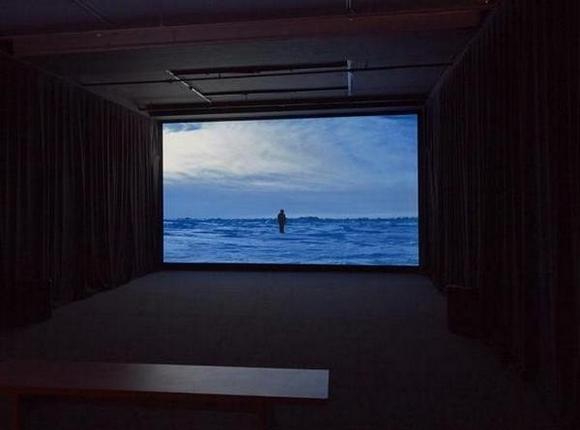
Guido Van Der Werve. “Nummer negen, the day I didn’t turn with the world.” 2007. Time lapse photography, 9 minutes, edition of 7 with 2 APs.
Other works include Olafur Eliasson’s sculpture of a kaleidoscope; Vija Celmins’ delicate vision of the Night Sky in photogravure, aquatint and drypoint; Mustafa Hulusi’s contrasting images of Nature and its ecstatic impact on man’s mind; the original video of the 1972 performance by Anthony McCall, showing a 7:30 minute long time-based choreography of lit fires across a field in the English countryside called Landscape for Fire; Roni Horn’s photo diptych called “Becoming a Landscape” (1999); poetic renderings of a tree by using masking tapes, by Peter Liversidge; Gao Weigang’s ironic commentary with a piece of entangled stainless steel called “In One Breath”, and Marina Abramovic’s down-to-earth photograph of “Places of Power” (2013), showing herself dressed in white with arms outstretched as if embracing or celebrating Nature, standing at the base of a powerful waterfall in Brazil.
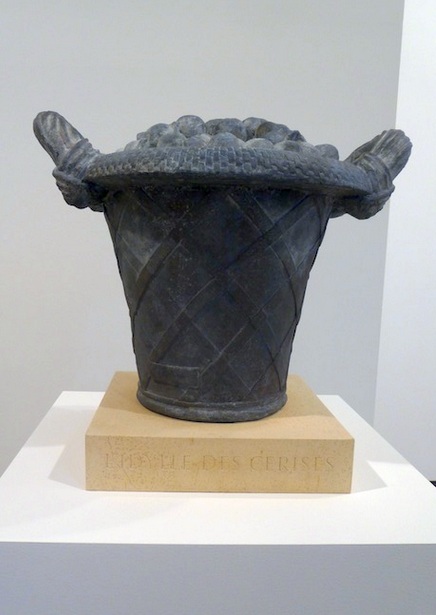
Ian Hamilton Finlay. “L’idylle Des Cerises”. 1986-2010. Lead cherry basket and stone plinth inscribed 2010. Height: 15 ¾ inches (40cm), diameter including handles: 21 ¼ inches (54 cm), stone: 11 7/8 x 11 7/8 x 3 inches (30 x 30 x 75 cm)
*Photography on main page slider:
On Featured:


